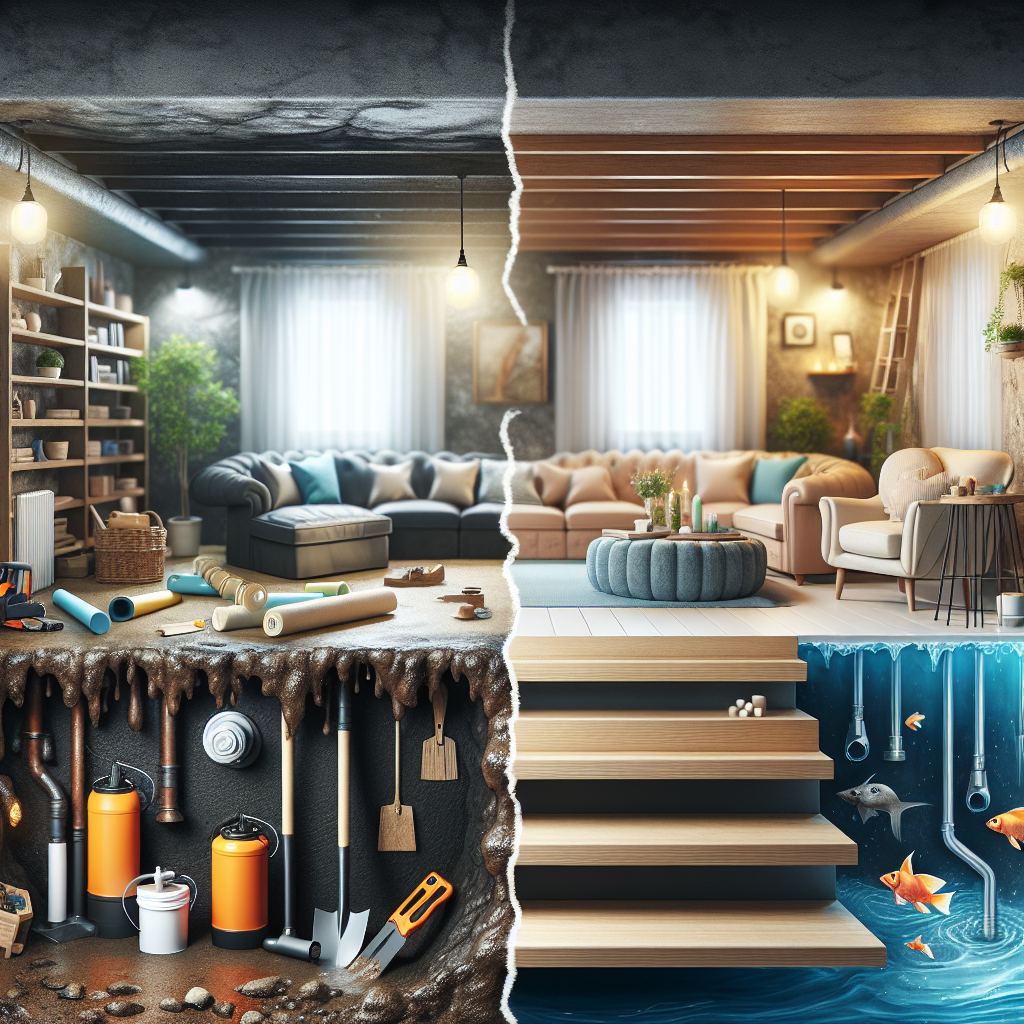Is your basement currently a damp, dark storage area filled with forgotten boxes? If so, you may be surprised to learn that with the right waterproofing techniques, you can turn it into a functional, inviting space. Whether you envision a home theater, a playroom, or a cozy guest suite, proper waterproofing is essential for achieving a dry and comfortable basement. Below, we’ll explore effective basement waterproofing techniques to help you create the cozy living space of your dreams.
Why Waterproofing is Crucial for Your Basement
Before diving into the techniques, it’s important to understand why basement waterproofing is critical. A damp basement can lead to a host of problems, including mold growth, structural damage, and unpleasant odors. Additionally, excess moisture can affect the air quality in your home, posing health risks to your family. Waterproofing your basement mitigates these risks, ensuring a healthier living environment and prolonging the lifespan of your home’s foundation.
Assessing the Source of Moisture
Identify Problem Areas
Before starting any waterproofing process, it’s imperative to identify where the moisture is coming from. Check for visible cracks in the walls, gaps around windows and doors, or signs of water pooling on the floor. External factors like improper drainage, downspouts directing water toward the foundation, or even proximity to large trees can also contribute to moisture-related issues.
Use a Moisture Meter
Investing in a moisture meter can help you accurately assess the moisture level in your basement. This device will pinpoint problem areas and help inform the waterproofing strategy you choose.
Effective Waterproofing Techniques
1. Exterior Waterproofing
Exterior waterproofing involves protecting your basement from moisture intrusion before it enters your home. This technique typically includes:
- Excavation: Digging around the home’s foundation to allow access for waterproofing measures.
- Waterproof Membrane Application: Applying a waterproof membrane to the exterior walls is a first line of defense against water.
- Drainage Solutions: Installing French drains and proper downspouts can help divert water away from your foundation.
2. Interior Waterproofing
If exterior waterproofing isn’t feasible, or if additional protection is needed, interior waterproofing can be effective. Key steps include:
- Seal Cracks and Gaps: Use hydraulic cement or specialized sealants to fill any visible cracks in the walls and floors.
- Apply Waterproof Paint: Consider using waterproofing paint designed specifically for basements to create a moisture barrier on the walls.
- Install a Sump Pump: If your basement is prone to flooding, a sump pump is a smart investment. It actively removes water that may collect in a sump basin.
3. Manage Humidity Levels
Even with proper waterproofing, humidity can be a problem. Control humidity with the following methods:
- Dehumidifiers: Use a dehumidifier to keep moisture levels manageable, particularly in the summer months.
- Ventilation: Ensure proper ventilation to circulate air and help dry out any humidity. Opening windows or installing vents can be beneficial.
Finishing Touches for a Cozy Environment
With your basement waterproofed, it’s time to turn it into a cozy living space! Here are some ideas to inspire your design:
1. Designated Living Areas
Create specific areas for different activities. A reading nook with soft lighting and comfortable seating makes for a perfect escape, while a game room can be filled with fun, interactive games.
2. Warm Color Palette
Choose warm, inviting colors for your walls and furnishings. Soft hues like beige, soft greens, or light grays can make the space feel more open and comforting.
3. Soft Lighting
Incorporate various light sources to create ambiance. Recessed lighting, stylish lamps, and wall sconces can help highlight the area and make it feel homey.
4. Accessories and Textiles
Add rugs, curtains, and throw pillows to create a warm atmosphere. Not only do these items add color and texture, but they also help absorb sound, creating a quieter space.
Conclusion: A Transformation Awaits
Transforming your damp, dark basement into a cozy living space is definitely possible with effective waterproofing techniques. By addressing moisture issues head-on and designing the space thoughtfully, you can create an area that is not only functional but also enjoyable for your family and guests.
So roll up your sleeves, invest a little effort, and get ready to unveil what could become your favorite part of your home. With a dry, waterproofed basement, the possibilities are endless!


